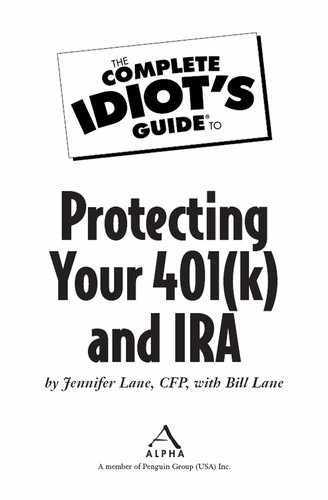Employer Roths: Roth 401(k) and Roth 403(b)
Roth 401(k) and 403(b) accounts make the great long-term tax savings of Roth IRAs available to employees lucky enough to have this option without the income eligibility restrictions of Roth IRAs. Just as with a Roth IRA, an employee’s deposit into a Roth employer account doesn’t save him any income taxes right away—deposits are made after-tax—but account earnings are tax-free. In fact, the only great feature of the Roth IRA that Roth employer accounts are missing is the option to defer withdrawals forever.
Remember, with a Roth IRA, a person doesn’t have to start withdrawing money from his account when he turns age 70½ like one does with a regular IRA. However, Roth employer accounts require minimum distributions just like regular IRAs starting at age 70½. Fortunately, the withdrawals are tax-free, and if you’d like to avoid the required distribution rules altogether, you can transfer your Roth employer account to a Roth IRA, as long as you’re not working for the employer anymore and the IRS hasn’t closed this loophole by the time you get to that age.
The Roth employer account will offer you the option to make both pre-tax contributions to the regular 401(k) or 403(b) account side of the plan and after-tax contributions to the Roth side. This is a great benefit to tax planning because you can decide how much you want to deposit into each side of the account.
But the Roth employer plan is still only one account and not both a regular employer plan plus a Roth plan. You can’t deposit up to the IRS limit into both sides of the account. For instance, if the IRS limit that year is $20,500, then you have the choice to count all of your deposit toward the Roth and none toward the regular 401(k) or 403(b) account or apply part to the Roth and part to the regular plan. You can’t deposit $20,500 to each option. Remember, like the Roth IRA, you’ll miss out on the tax deduction now, but you’ll have a great source of tax-free income once you retire.

Nest Eggs
I really like Roth 401(k) and Roth 403(b) accounts. I know that deposits are made after-tax and that getting the tax deduction goes a long way toward making the retirement plan deposits affordable. But if you think ahead to retirement, you’re going to be thrilled to have tax-free income available—especially if tax rates are higher than they are now, an unfortunate likelihood.
The only disappointing feature about Roth plans through work is that you still have the same contribution limit—you have to split your deposit between the two accounts or pick one or the other. I suggest you back into this decision by making sure you’re building tax-deferred accounts (like your regular 401[k]), as well as tax-free accounts like the Roth and taxable accounts like savings and regular nonretirement investment accounts. Having a variety of accounts to draw from gives you flexibility in retirement to pay for large or nonmonthly expenses, like cars and vacations, without having to draw taxable income from your tax-deferred accounts. If you don’t have money growing in tax-free Roth accounts, this is a good opportunity to start.
The Least You Need to Know
• IRS rules restrict account withdrawals until age 59½.
• You must start making withdrawals from most plans starting at age 70½.
• Investment vehicles, such as lower-cost mutual funds in your retirement accounts, can help avoid high annuities costs.
• Get clear tax and financial advice from an independent advisor before contributing to a 457 plan.
..................Content has been hidden....................
You can't read the all page of ebook, please click here login for view all page.
